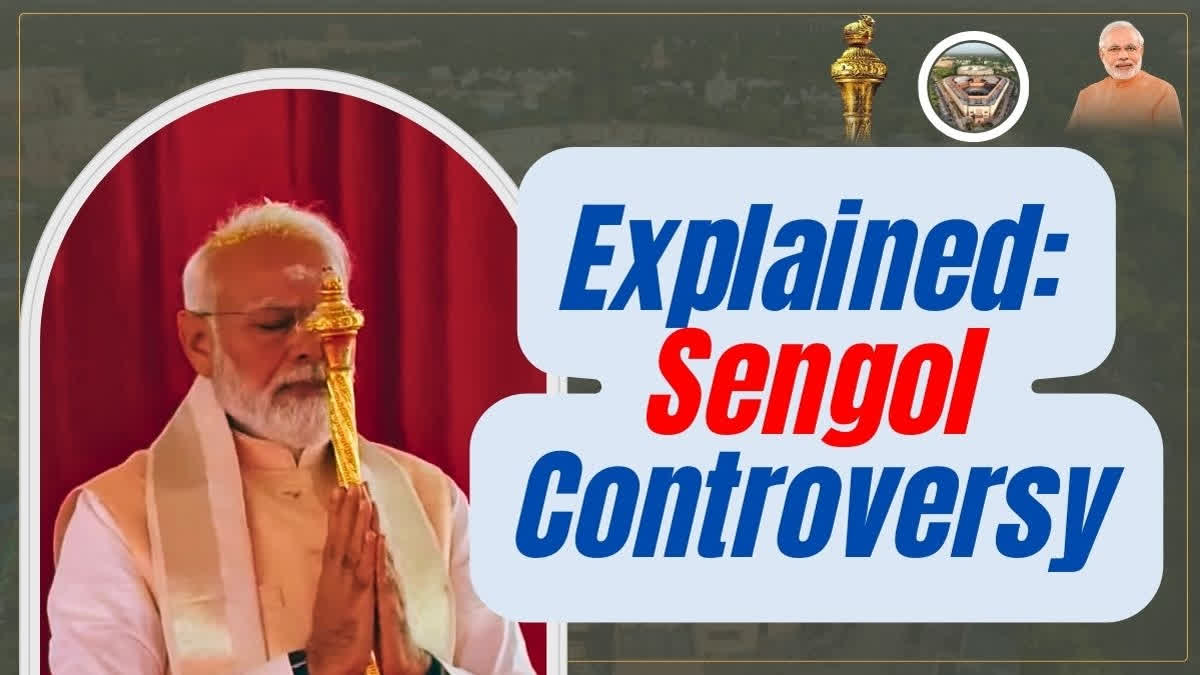Hyderabad: Sengol, which is the Tamil word for sceptre, holds historical significance as it was traditionally presented to kings during their coronation in medieval and pre-medieval times. In the context of India's transfer of power from British rule to independence in 1947, the Sengol was used symbolically to represent the ceremonial transfer of power from the British to the Indian people. The Thiruvavuduthurai Adheenam, one of the oldest Saivite institutions, officiated the ceremony, and the Sengol was crafted by Vummidi Bangaru Chetty and Sons, a Chennai-based jeweler. After the ceremony, the Sengol was placed in a museum in Allahabad.
The Indian government installed the Sengol next to the Lok Sabha Speaker's chair in the new Parliament building. Prime Minister Narendra Modi earlier received the Sengol from the Adheenam. This act is intended to be a symbolic gesture reminiscent of the transfer of power in 1947, emphasizing the continuity of India's democratic journey.
Also read- Stories around Sengol: 'Attempt to woo Tamils', 'fake narrative', 'WhatsApp history'?
According to the Centre, the history of the Sengol dates back to Lord Mountbatten's inquiry about the ceremonial aspects of the transfer of power. Jawaharlal Nehru, India's first Prime Minister, sought advice from C. Rajagopalachari (Rajaji), who introduced him to the tradition of ceremonial transfer of power practiced in medieval Tamil kingdoms. Historical evidence suggests that this tradition existed during the Sangam era and the Chola period of the medieval era. On August 14, 1947, the Deputy High Priest of the Thiruvavaduthurai Adheenam, along with a Nagaswaram player and a traditional temple singer (Oduvar), presented the Sengol to Lord Mountbatten. The sceptre was then purified with holy water from the river Ganga and carried in a procession to Nehru's residence, where it was handed over to him, symbolizing the transfer of power from the British to the Indian people. A special song was also performed during the occasion.
Also read- Congress terms BJP's 'Sengol' narrative as 'WhatsApp University' syllabus
However, controversy has arisen regarding the Sengol, particularly between the Congress and the Bharatiya Janata Party (BJP), which must be understood within the larger context of the Opposition parties' boycott of the new Parliament building's inauguration. The Opposition argues that the President of India should have inaugurated the building, not the Prime Minister.
Watch | Adheenam seers hand over Sengol to PM Modi ahead of Parliament inauguration
Congress leader Jairam Ramesh recently claimed that there is no documented evidence supporting the handing over of the Sengol by the British to Nehru on the eve of India's independence. Ramesh dismissed the claims of Mountbatten, Rajaji, and Nehru regarding the sceptre's symbolism as baseless and lacking any supporting evidence. In response, Home Minister Amit Shah from the BJP criticized the Opposition's remarks, considering them a "shameful insult" and an affront to India's culture. Shah controversially stated that the sceptre presented by the Adheenam had been reduced to a mere walking stick.
Also read- Congress reduced 'Sengol' to walking stick in museum: Amit Shah
The Thiruvavuduthurai Adheenam has refuted the Congress's claims, stating that it is well-documented that they were invited by Rajaji to conduct the ceremonial transfer of power in 1947. The institution expressed distress over the remarks made by individuals associated with certain political parties.
From a political perspective, the government's decision to place the Sengol next to the Speaker's chair holds significance, particularly in the context of the BJP's efforts to strengthen its presence in Tamil Nadu ahead of the upcoming general elections. This move can be seen as a continuation of the Kashi-Tamil Sangamam event held the previous year, which aimed to uphold the cultural and civilisational links between the North and the South.



